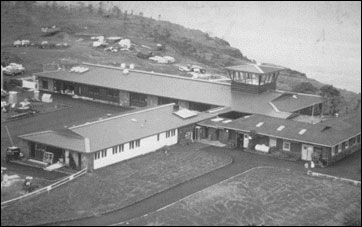

Eruptions of the volcanoes that dot the margins of the moving rigid plates of the Earth's crust characteristically are violently explosive. For example, in 1902 a single explosive eruption of Mount Pelee, Island of Martinique in the Lesser Antilles, virtually destroyed the entire city of St. Pierre, killing some 30,000 people. On the other hand, eruptions of the Hawaiian basaltic shield volcanoes generally are nonexplosive and more benign, posing a threat to property but rarely to life. For example, lava flows of the 1960 eruption of Kilauea Volcano burned and buried the small village of Kapoho on the eastern tip of the island of Hawaii. Not a single person was injured or killed, however, because warning signals of impending eruptive activity were detected in time to permit safe evacuation of Kapoho residents.
About 500 active volcanoes are known on the Earth, not counting those that lie beneath the sea. Scientists have estimated that at least 200,000 persons have lost their lives as a result of volcanic eruptions during the last 500 years. Little wonder that people living in the shadow of active or dormant volcanoes have feared eruptive outbreaks in times past and present.
Centuries ago, the Romans attributed volcanic and related phenomena (including earthquakes) mainly to the movement of wind imprisoned inside the Earth rushing violently to the surface. The Polynesians believed volcanic activity to be caused by the beautiful but wrathful Pele, Goddess of Volcanoes, whenever she was angered by actions of other deities or mortals. Today, scientists know that volcanic eruptions occur when buoyant magma (molten rock) that formed deep in the Earth ascends to the surface and ultimately is ejected upon release of gas pressure. More importantly, with precise instruments and refined data analysis, it is now possible to track the subsurface movements of magma by monitoring the earthquakes and measuring the ground changes that accompany such movements.

|
| Aerial view shows Hawaiian Volcano Observatory on the rim of Kilauea's crater. |